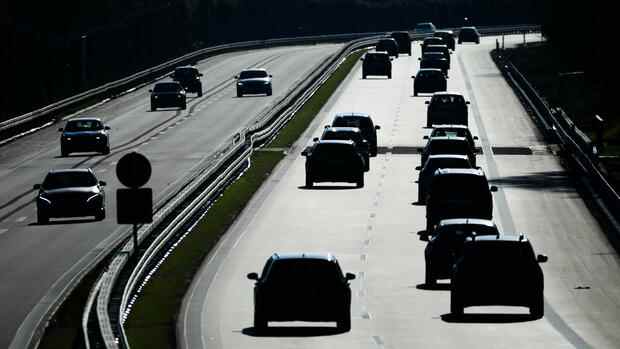Brussels For decades, the exhaust gas standards of the EU have meant that car engines are allowed to release fewer and fewer harmful substances. This should be different with the new Euro 7 standard: According to the current draft, the values should only change minimally.
The amount of the particularly relevant nitrogen oxides (NOx) should even remain constant. As for the Euro 6 standard, 60 milligrams of nitrogen oxides per kilometer may come out of the exhaust in order to meet the Euro 7 standard.
Why should there be a new emission standard at all if the emission values are not reduced? The Commission will propose that, for the first time, limit values be set for the abrasion of brakes. They should only release seven milligrams per kilometer, and from 2035 only three milligrams per kilometer.
Top jobs of the day
Find the best jobs now and
be notified by email.
Brake pad wear cannot be prevented. But it is possible to suck up and filter a large part of the abrasion with a kind of vacuum cleaner every time you brake. This system should probably be installed in every Euro 7 car. It was developed by the French supplier Tallano.
Euro 7 will “significantly tighten the standards for air pollutant emissions from motor vehicles and improve air quality for our citizens,” said EU Industry Commissioner Thierry Breton to the Handelsblatt and other European newspapers.
>> Also read: German UN diplomat defends short-term investments in fossil fuels
T&E sharply criticizes Breton’s design: “The emissions at the tailpipe are practically not reduced at all,” said Anna Krajinska, car expert at T&E. “This would mean that the Euro 7 label would be primarily greenwashing.” It is incomprehensible why the reduction in braking emissions should only be tightened up in 2035, although the technology for this is already available. Overall, however, T&E evaluates positively that there should be specifications for brake wear.
Tire wear is also to be regulated in the future. It is still unclear how their emissions can be measured, said Krajinska. Therefore the corresponding fields in the Annex of the Commission proposal are empty. Should progress be made during the legislative process and tire emissions made measurable, limit values could be entered there.
Further innovations in the emission standards
Another innovation is the introduction of the emission standards Euro 7+, 7A and 7G. Euro 7+ is intended to be awarded to cars that emit at least ten percent less pollutants than the Euro 7 standard specifies.
Euro 7A is intended to show that the exhaust gas cleaning system can be adjusted so that emissions can be further reduced in environmental zones. Euro 7G is intended to identify hybrid cars that automatically switch to zero-emissions electric mode in environmental zones.
It is still unclear whether these requirements will be implemented by the industry. For this it is necessary for the car to recognize whether it is in an environmental zone. T&E sees implementation problems here.
In addition, emissions of pollutants outside the environmental zones could increase if the fine dust collected in the filters is burned off and discharged outside the environmental zones.
The emission standards do not conflict with the EU requirement that no new combustion engines may be registered after 2035. Because they also define specifications for existing cars.
The EU Commission expects that in 2050 at least 20 percent of petrol and diesel cars will be on Europe’s roads. The emission limits for brakes and tires would also apply to electric cars.
Breton called on the auto industry to continue investing in combustion engine technology. Outside of Europe, these engines would be used for much longer. There, too, the air quality must be improved and the contribution to climate change limited.
Breton wants to closely follow the change in the European car industry. There is help with structural change for coal regions, but not yet for the mobility sector. “We don’t have any structures to facilitate the exchange of knowledge and information between the directly affected regions,” he said. More money is needed to make the transition easier.
More: EU plans new emission standards – Euro 7, Euro 7+, Euro 7A and Euro 7G
